Frederick Deknatel is the Executive Editor of Democracy in Exile, the DAWN journal.
Despite a widening crackdown, including an ominous ultimatum from the head of the Islamic Revolutionary Guard Corps on October 29 that it would be "the last day" of the protests, which he called "riots," defiant Iranians continue to take to the streets across the country. On October 30, students at some of Iran's leading universities braved barrages of tear gas and live fire from security forces. Those protests followed the mass demonstrations last week that marked 40 days since Mahsa Amini, a 22-year-old Kurdish woman, died in the custody of the so-called morality police in Tehran, which set off this revolutionary wave of anti-government protests, led by Iranian women under the banner of "Woman, Life, Freedom!"
"It is as if a 'new Iran' has been born—a 'global Iran,' a collective of diverse people who are separated by geography but are very much together in feelings, in concerns and in dreams," sociologist Asef Bayat, who closely studies protest movements in the Middle East, told a Tehran daily. "People feel that a normal life has been denied to them by a regime of elderly clerical men. These men, they feel, seem so separated from the people and yet they have colonized their lives."
That description of Iran could apply to many Arab countries, where the suppression of women's rights also reflects broader limits on other basic political and human rights. How, then, could the ongoing protests in Iran be felt in those Arab countries, from neighboring Iraq to the monarchies of the Gulf? If recent history is any guide, are today's protests in Iran a harbinger of other protests in the Arab world, also seeking dignity and freedom?
To understand the potential implications beyond Iran, Democracy in Exile asked a wide range of experts and observers, including DAWN's own non-resident fellows, the following question: What impacts could the protests in Iran have across the Middle East, both for pro-democracy and human rights activists in Arab countries and their widely repressive governments?
For pro-democracy and human rights activists, the Iranian struggle is not just a struggle of women seeking autonomy, but also of minority ethno-religious groups seeking equality and representation in the nation.
- Marsin Alshamary
The Struggle for Equality and Representation
The occurrence of any large-scale anti-government protest in a country often raises questions of whether a domino effect will occur—in other words, whether the protest movement will spill into neighboring countries. Across the globe, protest movements have spread across regions, including the Color Revolutions of the post-Soviet states and the more recent Latin American Spring. Of course, the Arab Spring is the most relevant example of the protest domino effect, having impacted nearly every country in the MENA region. The memory of the Arab Spring and its ultimate demise, embodied by Tunisia's backslide into authoritarianism, is on everyone's mind, activists and autocrats alike. As a result, we can assume a heightened security environment in neighboring countries.
At the same time, Iranian protests elicit different reactions in other Middle Eastern states, depending on the cultural or religious proximity. For example, the Iranian Revolution in 1979 inspired protest movements in Shia-majority neighboring Iraq. What distinguishes this particular protest movement is how much it highlights the ethno-religious diversity of Iran; the young woman whose death ignited the movement, Jina (Mahsa) Amini, is Kurdish. For Iraq, which has a semi-autonomous Kurdish region, there is less fear of ethnic-based protests engulfing the country, but the sympathies of the Iraqi Kurdish population are undoubtedly with their co-ethnics next door. However, the political relationship between Iraqi Kurdish parties and the Iranian government has deteriorated due to attacks on Iraqi Kurdistan this past year.
For pro-democracy and human rights activists, the Iranian struggle is not just a struggle of women seeking autonomy, but also of minority ethno-religious groups seeking equality and representation in the nation. As such, these protests are compelling activists throughout the region who have an inclusive definition of democracy. These activists face both a greater level of scrutiny from the government and less attention from the local population, which oftentimes is more concerned with economic grievances than with women or their co-nationals of different ethnic groups. Perhaps these protests will remind the region that the pursuit of democracy, like democracy itself, must be an inclusive affair.
—Marsin Alshamary, an Iraqi-American researcher, is a research fellow with the Middle East Initiative at the Harvard Kennedy School and a non-resident fellow with the Brookings Institution's Center on Middle East Policy.
*
Domino Effects, All the Way to Tunisia
Iran's ongoing protests will have considerable impact on the entire Middle East, not just Iran's Gulf neighbors. The specter of greater social upheaval already looms for repressive Arab states, as the rising cost of food staples, and the oft-stalled but needed economic reforms to meet them, become more urgent and more painful. People in the region have not been exposed in their official media to Iran's protests in the same way as people in the West, but they can still access news and images on social media. Arab publics may take inspiration from Iranians challenging police, and thus will compromise less on their own demands where protests are already ongoing in the Arab world. On the other side, repressive states are already in a quandary—whether to repress with greater force, moderate their repression, or concede to possibly a passing sentiment, while in an economic environment that has raised the cost of living to levels that threaten the status quo.
In Tunisia, Kais Saied has reportedly been wooing Gulf states to help him weather the storm of higher food prices, greater social unrest, biting IMF conditions, food shortages and an increasingly unruly state—a state of affairs contrasted with Saied's promises of greater prosperity, better days and stability, in exchange for setting aside democratic institutions and amassing greater power for himself with no accountability.
Iran's protests create greater urgency for the Tunisian state, and others like it, to control the information environment and undermine critics challenging the status quo. We should expect more efforts by repressive states to seek to disinform and challenge the narrative that questioning state authority is fruitful, or that an alternative will make things better, as the state itself is stretched. Opponents of repression and proponents of greater freedoms are challenged not only by the danger of being targeted by a more coercive and repressive state, but by the need to provide answers to a populace that is increasingly desperate, and an information environment that favors disinformation and state propaganda. If the protests do lead to major concessions by the Iranian regime and its failure to continue functioning cohesively, it may create another wave in the region, a sense of inevitable change.
—Seifeddine Ferjani is a Tunisian political analyst living in the United Kingdom. He writes about North African regional affairs, particularly Tunisia and Libya.
*
An Inauspicious Moment in the Gulf
The reactions in the countries in the Gulf Cooperation Council to the Iran protests are colored by their governments' contest with Iran. While the Saudi government is pleased to see its competitor in difficult straits—and is perhaps helping to keep them there through support for opposition-centered radio broadcasts into Iran—it is less eager to publicize protests before its own citizens. And Qatar, which championed media coverage of the Arab Spring protests, is more circumspect in disrupting its complex ties with Iran. There is thus less media exposure, and less schadenfreude, than one might expect.
For Gulf activists and reformists, there is sympathy and amazement for the bravery of the women protesters in Iran. But the moment is not auspicious for a wave to join them. The current state-directed opening in Saudi Arabia is incomplete and even detrimental to political empowerment, but it has created some social liberties for Saudi women. This makes Iran's social lockdown even more intolerable by comparison. Woman, life, freedom—all three await full realization across the Gulf.
—Kristin Diwan is a senior resident scholar at the Arab Gulf States Institute in Washington.
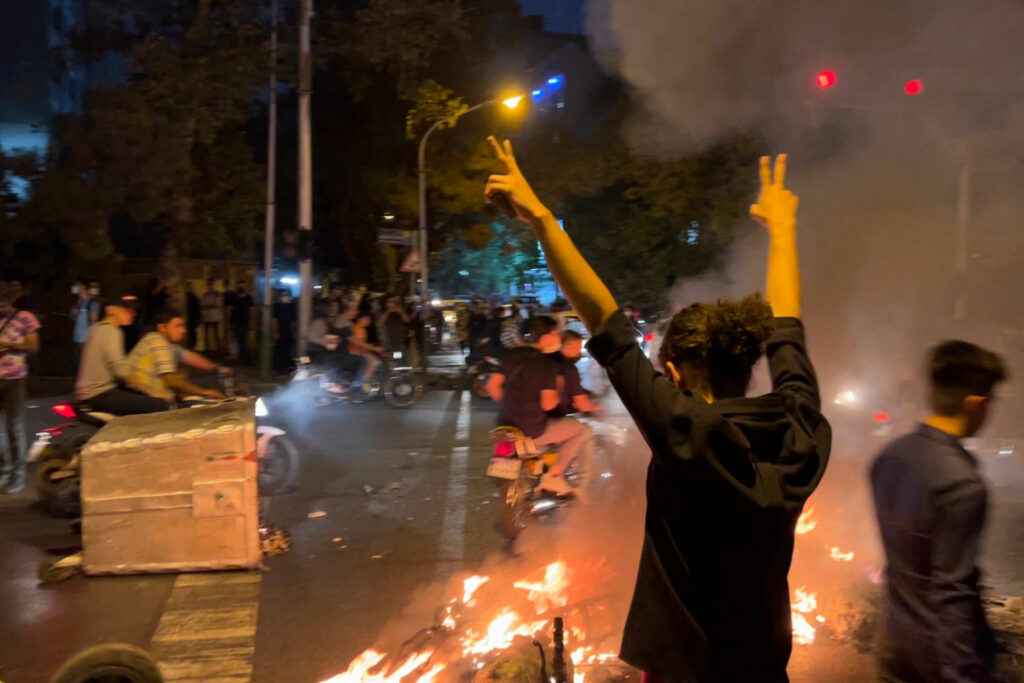
Will Repression Work?
Six weeks since the start of Iran's protest movement, galvanized by the death of Mahsa "Zina" Amini, it appears that the protests continue to gain steam despite the regime's crackdown, which human rights groups say has killed at least 233 protesters, including 32 children.
Tehran is employing tactics similar to its response to widespread demonstrations in 2009 and 2019-2020, including firing at demonstrators and forcibly shipping dissenting students to psychiatric institutions. However, this time, with the advent of technology, Tehran is also employing a longer game that includes tracking, surveillance, infiltration and targeting presumed leaders as well as their families—tactics currently used in several post-Arab Spring states to quell and prevent future protest.
The question is, will the repression continue to work, and will this women and youth protest movement change anything? Two-thirds of Iran's population is under 30, and protests have the support of unions, students and civil society groups. And with hundreds of victims, cycles of religious mourning are creating a culture of protest and gatherings. Protesters remain undeterred, evidenced by the continued demonstrations despite the head of Iran's powerful Revolutionary Guards warning protesters that last Saturday would be their "last day" of taking to the streets, in the clearest sign that security forces may intensify their already fierce crackdown on widespread unrest.
It is post-Arab Spring states that are carefully watching. Over the past several months, human rights defenders have ramped up pressure on the Egyptian government to drastically improve the rights situation in the country as the U.N. climate summit approaches. Posts on social media are currently calling for protests in Cairo on Nov. 11, as Egypt has experienced a significant currency devaluation that has hit its economy and population hard. Protesters in Tunisia took to the streets this week, as the country suffers from fuel and food shortages after President Kais Saied moved to consolidate political power. One year after Saied's coup, Tunisian activists continue to mobilize despite deadly crackdowns.
As post-Arab Spring states look at the continued popular mobilization in Iran, they are also witnessing a return of protesters to their own squares. And while the outcomes remain unknown, what is becoming clear is that despite the increased repression throughout the region, there are growing pockets of women and youth that remain undeterred.
—Dalia Fahmy is an associate professor of political science at Long Island University and a visiting scholar at the Center for the Study of Genocide and Human Rights at Rutgers University. She is also a non-resident fellow at DAWN.
*
The Arab Spring Never Ended
Let us begin by remembering that the protest movements and uprisings of 2009 in Iran were the precursors to the so-called "Arab Spring" uprisings and revolutions. Now, it is happening again—that is, the current protests and uprisings have started in Iran following the killing of a Kurdish-Iranian young woman, 22-year-old Mahsa Amini, at the hands of the "morality police" because her hijab was supposedly worn improperly. Recently, Supreme Leader Ayatollah Khamenei ordered the morality police to crack down on improper dress, especially of women. Mahsa Amini's brutal detention and murder served as part of the crackdown. This abuse and murder of a young Iranian woman triggered the public's anger and frustrations with the morality police and the regime itself.
We should not forget that everyone in the Middle East can relate to suffering due to the violent repression and abuse that the region's governments and regimes routinely exact on the masses. This common denominator among the masses, of knowing and feeling firsthand the violent repression that their regimes inflict on them, is the fault line throughout the region. That is why when there are citizen protests in Iran, their counterparts in Arab countries have risen up as well. Their grievances and demands have not changed since 2011: more representative governments that meet the needs of the people and treat them with dignity and respect under the rule of law. That means eliminating corruption, providing jobs, reducing poverty and illiteracy, providing good health care and access, and much more.
The Iranian regime, unfortunately, is experienced and skilled in violently crushing dissent. However, social media and other forms of information have illustrated that the regime's crackdown on the current protesters has not deterred the entire movement. It is still strong, and it is persistent, and it is widespread throughout Iran. In one way, this whole episode sends a message to the repressive Arab regimes that they should be prepared for similar protests happening in their countries. The Arab Spring never ended. It became dormant, but its spirit and pro-democracy and human rights activists are still stirring, organizing and preparing for the next iteration of the Arab Awakening (which is a better title for it). This iteration will likely be more difficult, given that Arab regimes have a taste of what happened in 2011 and are likely to fortify and entrench themselves further.
Two countries already have similar theocratic systems as Iran: Saudi Arabia and Afghanistan, now that the latter is controlled by the Taliban. All three—Iran, Saudi Arabia and the Taliban in Afghanistan—are enemies of democracy, human rights, freedoms and agency, especially for females. All of these regimes are violent, brutal and impose their ideologies on their populaces by force.
The ideal thing to happen would be for the Iranian protest movement to successfully remove the current regime and replace it with a democracy. Hopefully, that would inspire others in the region to undertake the same task with the same goal. All the rusted, corrupt leaders and regimes need to go. As long as these violently repressive regimes stay in power, there will be no progress and development of substance and depth, especially on the conflict resolution that needs to take place to end the senseless wars in Yemen and Syria and other conflicts in the region. As the regimes stagnate, so will their countries.
—Hayat Alvi is an associate professor at the U.S. Naval War College. The views expressed here are her own.
For Gulf activists and reformists, there is sympathy and amazement for the bravery of the women protesters in Iran. But the moment is not auspicious for a wave to join them.
- Kristin Diwan
The Courageous Example of Iranian Women and Girls
Iran is a non-Arab outlier in the Middle East, but what happens there reverberates in the region and vice versa. Thus the 2009 Green Movement in Iran, against a fraudulent presidential election, was in some ways a precursor to the 2011 Arab Spring. A decade later, the protests that erupted in Iran following the death in police custody of Mahsa Amini are arousing feelings of solidarity among women in many Arab countries. Merissa Khurma, who directs the Middle East program at the Wilson Center, wrote that video clips of Iranian women cutting their hair, burning their scarves and chanting "Women, Life, Liberty" are being shared across the region and have sparked demonstrations in support of their Iranian sisters by women in Tunisia, among other places.
Legal and other forms of discrimination against women are widespread in Arab countries, even if they do not enforce veiling or segregation by sex. All these societies have male rulers, most of them kings or military dictators. While they may enact superficial reforms, they are misogynistic at heart. Countries that enforce legal discrimination against women generally repress all their citizens and try to make men "feel superior" by giving them power over women. It is a bad bargain for men and women alike. Hopefully, the courageous example of Iranian women and girls will inspire Arab women and men to demand the personal and political freedoms they have been deprived of for too long.
—Barbara Slavin is the director of the Future of Iran Initiative and a non-resident senior fellow at the Atlantic Council.
*
What Arab Rulers Are Learning From Iran
The regime in Iran is violently suppressing protests that started over the killing of a young woman deemed by autocratic Muslim authorities to have breached highly conservative dress codes. Those protests quickly picked up more widespread anti-regime sentiments, springing from a dearth of employment and economic opportunities coupled with housing, food and water shortages, political repression and rigid, religio-societal parameters. Several of those factors prevail in Arab countries, including Saudi Arabia, the United Arab Emirates, Syria and Egypt. The Arab Spring was one widespread manifestation of citizens' rejection of the status quo and desperation for change. The Syrian uprising-turned-civil-war was another, more prolonged, attempt to transform society. Like the Green Movement demonstrations after Iranian elections in 2009, the Arab Spring, and especially the Syrian uprising, were brutally extinguished by ruling authorities often working to prop up each other. Those Arab states now have more advanced surveillance technologies than before the Arab Spring and show no hesitation in deploying them to quash dissent. Even elites are no longer exempt from repression by their peers, including the silencing of dissenting members within ruling families as witnessed in Saudi Arabia, the UAE and Jordan. Recently, protests in Egyptian universities over the introduction of conservative dress codes were snuffed out rapidly before they could gain traction.
Despite their rivalries with Iranian leaders, Arab rulers are learning from the current situation within Iran to not let dissent find public expression in case it galvanizes the population to seek regime change. So, the trajectory of events in the Middle East points to less freedom and personal choice, routine trampling on human rights, and ever more repressive, narrowly-based governments for which regime survival will remain paramount.
—Jamsheed K. Choksy is Distinguished Professor of Central Eurasian and Iranian Studies in the Hamilton Lugar School of Global and International Studies at Indiana University, and was a member of the United States National Council on the Humanities from 2008 to 2019.
—Carol E. B. Choksy is Senior Lecturer of Strategic Intelligence in the Luddy School of Informatics, Computing and Engineering at Indiana University.
*
Repression Will Not Silence Millions
As the world watches women and youth-led protests continue in Iran, demanding fundamental and even revolutionary change, many have described the scenes of fearless Iranians facing security forces as inspiring. The fact that the protests were sparked by the killing of a young woman, Mahsa Jhina Amini, at the hands of Iran's so-called morality police enforcing Iran's strict dress code has also generated support from women across the world demanding bodily autonomy as a cornerstone of women's rights. With the combined demands of women's rights, freedom and an appeal to democracy, this youth-led movement in Iran may encourage pro-democracy and human rights activists in neighboring countries, and the region, to make similar calls.
Demands for democracy, greater freedoms and governments that serve the interest of their people are certainly not new to Iran or the region. Similar anti-government protests and uprisings were seen across the region in the Arab Spring that began in late 2010 and came after Iran's Green Movement in the wake of its contested presidential election of 2009. Unfortunately, many of those movements and protests were squashed by their repressive governments. While it is likely that these authoritarian states will use similar forms of repression to subdue any challenges to their power, the new wave of protests in Iran—which go to the core of the system—show that repression will not silence the voices of millions of people demanding their rightful freedom.
—Assal Rad, is the research director of the National Iranian American Council (NIAC).
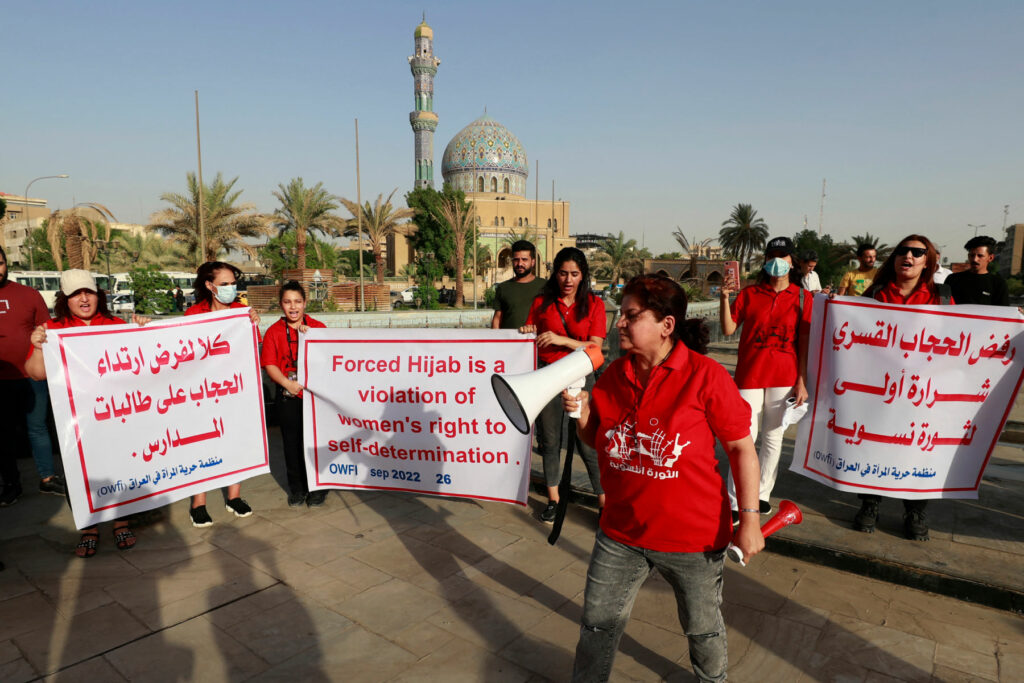
A Third Revolutionary Wave?
Arab dictators are watching the protests in Iran very closely, no doubt with a sense of anticipation. Now into its second month, an incipient revolution seems to be emerging that has shaken the Islamic Republic to its core. Saudi Crown Prince Mohammad bin Salman, who funds a Persian language TV channel, has been giving this uprising maximum coverage, likely hopeful that Reza Pahlavi, the son of the last Shah of Iran, can assume power and pro-Western monarchies can once again exist on both sides of the Persian Gulf.
MBS and his club of fellow Arab dictators, however, might want to dampen their enthusiasm for the Iranian uprising. While it may be politically expedient to cheer on the Iranian protesters, these autocrats should be careful what they wish for. Nearly identical social, political and economic conditions that gave rise to the revolt in Iran exist across the Arab world. There is also a historical precedent for revolutionary change in Iran inspiring similar demands in the Arab world.
The International Monetary Fund ranks the Middle East and North Africa as the worst-performing corner of the world economy since 2011. Over the next few years, the IMF forecasts, the region will retain its unique distinction. The key socio-economic indicators in the Arab world suggest a coming societal explosion is inevitable.
The Middle East has the world's highest youth unemployment rate. It also has one of the fastest population growth rates in the world. A recent study on poverty in the region, based on a careful analysis of data and trends from World Bank and U.N. Development Program, concludes that poverty rates are four times higher than previously assumed. Two-thirds of the total Arab population can be classified as poor or vulnerable. Mass pauperization is now a common feature of the region and, according to the 2022 Global Inequality Report, it is the most unequal part of the world, where the top 10 percent capture almost 60 percent of the national income.
Post-Arab Spring, the region has also experienced expanding state repression. When judged by key indicators—such as democratic development (both civil and political rights), press freedom, censorship, women's representation, status of minorities and state-sanctioned executions—countries in the Middle East have some of the lowest scores in the world. Annual reports by Freedom House, Reporters Without Borders, the World Press Freedom Index, Amnesty International and Human Rights Watch all confirm this picture. Politically, what people in the Arab world and Iran have in common is the general absence of basic citizenship rights. Corrupt ruling elites remain in power, refusing to share it or relinquish it. When the people protest, they are met with state-sanctioned violence and extreme brutality.
Looking ahead, an ideal outcome for the Middle East would be a nonviolent democratic transition in Iran that replaces the Islamic Republic. This would then inspire Arab societies to replicate this toppling of authoritarianism. There is a precedent for this sequencing of events where demands for structural political change in Iran reverberate and inspire similar political demands in the Arab world.
The 1979 Revolution in Iran rocked the political status quo across the Arab-Islamic world. The second moment was roughly 13 years ago. The historian Nikki Keddie has observed that the Iranian Green Movement of 2009 "may be considered part of the 2009–2011 [Middle Eastern] revolutionary wave." Future historians, she suggested, would look on this period in precisely this way. Perhaps, this third wave in 2022 will be the charm.
—Nader Hashemi is the director of the Center for Middle East Studies and an associate professor of Middle East and Islamic politics at the Josef Korbel School of International Studies at the University of Denver. He is also a non-resident fellow at DAWN.
*
A Unique Threat to Arab Autocrats
Though several Arab autocrats throughout the region have cheered the protests in Iran and undoubtedly enjoy seeing a regional adversary undermined domestically, the protests also represent a unique threat to their own authority and legitimacy. Many of the underlying grievances fueling the protests in Iran—such as the manipulation of religion for political purposes, imposed patriarchy, crony capitalism, and other forms of exclusion and repression—are present throughout countries in the Middle East. These governments fear that the protests in Iran could inspire mobilization throughout other parts of the region. Moreover, regional autocrats do not desire the emergence of genuine democracy within Iran, for this would seriously challenge the broader authoritarian status quo that prevails throughout the region. They want to see the ruling regime in Tehran undermined, but they do not want Iran to emerge as a powerful democracy capable of considerably altering the center of gravity in the region and the regional balance of power. Gulf Arab autocrats in particular, especially Saudi Arabia, the United Arab Emirates and Bahrain, fear an empowered democratic Iran for these reasons, as does Israel, all of which would lose the ability to exploit the "Iran card" in Washington as part of their attempts to garner American support. Hopefully, the protests in Iran will serve as a wake-up call for the United States: The only stable Middle East is a free and democratic Middle East.
—Jon Hoffman is a PhD candidate at George Mason University specializing in Middle East geopolitics and political Islam.
*
There Is No Going Back, in Iran and Across the Region
This feminist uprising in Iran is a continuation of a century-old movement for equality and basic rights. It is incredible to watch from the outside as women and young girls, shoulder to shoulder with men and allies, are braving bullets and brutal violence on the streets of Iran. This uprising is being closely watched by women across the Middle East, many of whom live in similarly patriarchal and repressive communities, and are in awe of the bravery of Iranian women and have shown their support with messages of solidarity. Iranian women and girls are chanting "Woman, Life, Freedom!" with immense courage and dignity, paving the way toward equality and showing the path to women in the rest of the region. Iranian women saw themselves in Mahsa Amini, and Iranian men saw their sisters in her. So they rose up to say never again to decades of discrimination and state-sanctioned violence. This is a historic moment in Iran and across the region, and there is no going back to how things were before September 2022.
—Negar Mortazavi is an Iranian-American journalist and political analyst based in Washington D.C. She is the host and editor of the Iran Podcast.
*
Why the Status Quo Will Persist
A weakened, significantly toned down or even ousted Iranian regime will impact the Middle East region in historic ways—just as the 1979 Iranian revolution spawned the so-called "resistance and deterrence front" that has been one of the two dominant ideological poles of the region since then. This is because it would shake and probably cripple the regional network of close ideological and military allies that is the Islamic Republic of Iran's most substantial foreign policy success. This evolving network has included Hezbollah in Lebanon and the Syrian government as its two principal allies, along with strong ties to the Houthis in Yemen, Hamas in Palestine to changing degrees, and around half the kaleidoscopic political forces in Iraq.
This iron-fisted regional bloc has anchored the active opposition to the American-, Israeli- and Saudi-Emirati-led grouping of states. It also often enjoys strong support among Arab public opinion that loves anyone who defies this U.S.-Israeli-Gulf alignment. Iran remarkably has been able to withstand decades of brutal, U.S.-led international sanctions, and sustained assassinations and sabotage of its technological systems by Israel, while continuing to develop advanced nuclear capabilities and skirt oil export bans. Its defiance and active resistance against those who have tried to subdue it finally forced the U.S.-led global powers to meet its demands to pursue nuclear technology for peaceful purposes under intense international supervision.
The Iranian government's bloody suppression of the current protests and previous mass protests remind the region that it promises its citizens and regional allies more of the same: repression and economic weakness at home, but ideological defiance and technological prowess regionally and globally. This sad reality reflects the ways of its half a dozen regional allies, whose swagger and technical capabilities have forced Israel into a de facto truce along its land and sea frontiers with Lebanon, and stunned the Saudi-Emirati-U.S. military camp in Yemen.
It is possible that a humbled and milder Iranian regime could slow down or reverse the successes of its regional allies and allow Arab citizens throughout the region to form governance systems that promote dignity, freedom and development. But there is no hard evidence of either happening now. Instead, there are the recent examples of autocratic forces that have beaten back democratic impulses in Syria, Libya, Tunisia, Egypt, Lebanon, Bahrain, Algeria, Bahrain and Sudan. It is clear that as long as the government of any Middle Eastern country enjoys sufficient foreign currency reserves and loyal soldiers who will shoot their fellow citizens, the status quo will persist.
—Rami G. Khouri is the co-director of the American University of Beirut's Global Engagement Initiative, and a political analyst and writer.









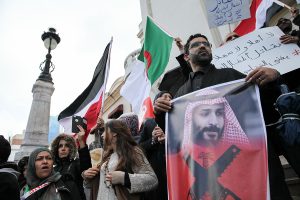
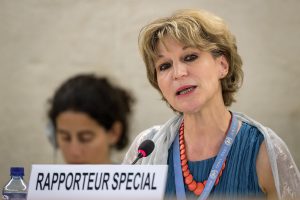


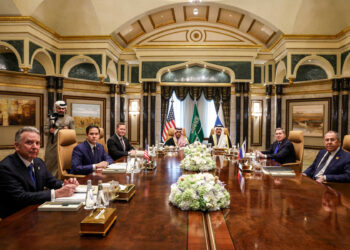

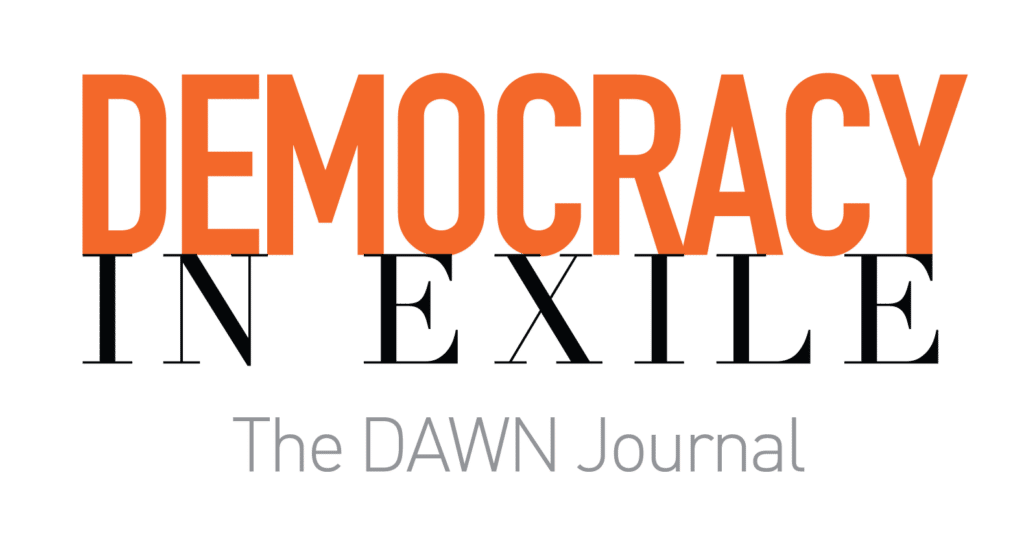





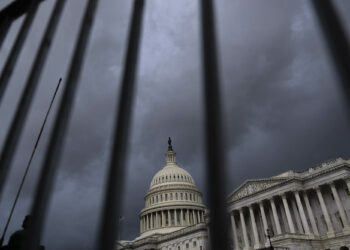





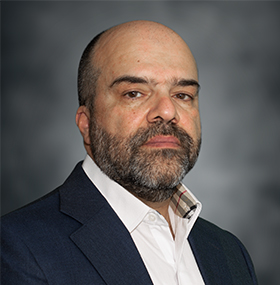






![Security forces loyal to the interim Syrian government stand guard at a checkpoint previously held by supporters of deposed president Bashar al-Assad, in the town of Hmeimim, in the coastal province of Latakia, on March 11, 2025. Syria's new authorities announced on March 10, the end of an operation against loyalists of deposed president Bashar al-Assad, after a war monitor reported more than 1,000 civilians killed in the worst violence since his overthrow. The Syrian Observatory for Human Rights said the overwhelming majority of the 1,068 civilians killed since March 6, were members of the Alawite minority who were executed by the security forces or allied groups. (Photo by OMAR HAJ KADOUR / AFP) / “The erroneous mention[s] appearing in the metadata of this photo by OMAR HAJ KADOUR has been modified in AFP systems in the following manner: [Hmeimim] instead of [Ayn Shiqaq]. Please immediately remove the erroneous mention[s] from all your online services and delete it (them) from your servers. If you have been authorized by AFP to distribute it (them) to third parties, please ensure that the same actions are carried out by them. Failure to promptly comply with these instructions will entail liability on your part for any continued or post notification usage. Therefore we thank you very much for all your attention and prompt action. We are sorry for the inconvenience this notification may cause and remain at your disposal for any further information you may require.”](https://dawnmena.org/wp-content/uploads/2025/04/syria-22039885951-360x180.jpg)




